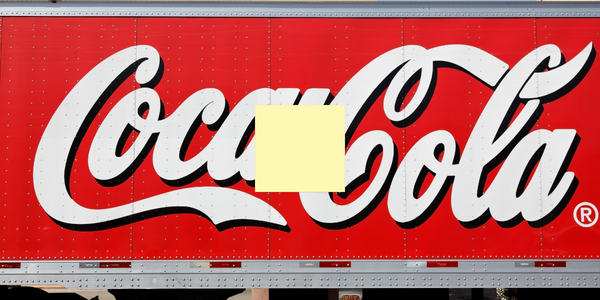下载PDF
Innovating at the source
技术
- 分析与建模 - 实时分析
- 基础设施即服务 (IaaS) - 云计算
适用行业
- 食品与饮料
适用功能
- 离散制造
- 维护
用例
- 能源管理系统
- 预测性维护
- 过程控制与优化
- 实时定位系统 (RTLS)
- 远程资产管理
服务
- 云规划/设计/实施服务
- 系统集成
- 测试与认证
挑战
Danone evian, a renowned brand of natural mineral water, wanted to upgrade its bottling facility to deliver water more sustainably by reducing energy consumption at every stage of production. The key challenge of the project was maintaining the continuity of operations, which meant all modernization work had to be synchronized with just two annual maintenance shutdowns at the site. The company aimed to monitor, visualize, and manage energy use in real time; increase energy efficiency; and achieve sustainability goals.
关于客户
The internationally renowned brand of evian natural mineral water belongs to French food group Danone. The brand’s history reaches back to 1789 when the Marquis de Lessert discovered a spring in the town of Evian-les-Bains. The unique crisp taste of evian water is the result of its 15-year journey through glacial rocks, where it gets filtered and enriched with minerals and electrolytes. Upon arriving at its destination in Évian-les-Bains, it gets bottled at the evian factory, which has 14 production lines delivering 33 product types, from 75 centiliters glass bottles to the 6-liter carboys. The company's business as mineral water producers is not only bottling this resource, but above all preserving and protecting it.
解决方案
For the modernization project, Danone evian decided to go with Schneider’s Service and Modernization Plan. The companies signed a 7-year contract with a fixed annual fee for both modernization and maintenance of the electrical installation. The project kicked off with an MPS (modernization, performance, safety) audit to comprehensively evaluate the condition of the existing equipment. Schneider experts worked to identify and document possible safety risks and regulatory issues, assess current capabilities, identify required upgrades, and create a complete overview of installed assets. In the next step, the old MV switchgear were replaced with the new Schneider’s SM6 switchgear. Schneider also took care of the end-of-life processing of old equipment, including the environmentally friendly disposal of SF6 gas. The LV switchgear were modernized within Schneider’s ECOFITTM solutions. The old MasterPact type M circuit breakers got exchanged for the latest MasterPact MTZ 2 circuit breakers.
运营影响
数量效益
相关案例.

Case Study
The Kellogg Company
Kellogg keeps a close eye on its trade spend, analyzing large volumes of data and running complex simulations to predict which promotional activities will be the most effective. Kellogg needed to decrease the trade spend but its traditional relational database on premises could not keep up with the pace of demand.

Case Study
HEINEKEN Uses the Cloud to Reach 10.5 Million Consumers
For 2012 campaign, the Bond promotion, it planned to launch the campaign at the same time everywhere on the planet. That created unprecedented challenges for HEINEKEN—nowhere more so than in its technology operation. The primary digital content for the campaign was a 100-megabyte movie that had to play flawlessly for millions of viewers worldwide. After all, Bond never fails. No one was going to tolerate a technology failure that might bruise his brand.Previously, HEINEKEN had supported digital media at its outsourced datacenter. But that datacenter lacked the computing resources HEINEKEN needed, and building them—especially to support peak traffic that would total millions of simultaneous hits—would have been both time-consuming and expensive. Nor would it have provided the geographic reach that HEINEKEN needed to minimize latency worldwide.

Case Study
Energy Management System at Sugar Industry
The company wanted to use the information from the system to claim under the renewable energy certificate scheme. The benefit to the company under the renewable energy certificates is Rs 75 million a year. To enable the above, an end-to-end solution for load monitoring, consumption monitoring, online data monitoring, automatic meter data acquisition which can be exported to SAP and other applications is required.

Case Study
Coca Cola Swaziland Conco Case Study
Coco Cola Swaziland, South Africa would like to find a solution that would enable the following results: - Reduce energy consumption by 20% in one year. - Formulate a series of strategic initiatives that would enlist the commitment of corporate management and create employee awareness while helping meet departmental targets and investing in tools that assist with energy management. - Formulate a series of tactical initiatives that would optimize energy usage on the shop floor. These would include charging forklifts and running cold rooms only during off-peak periods, running the dust extractors only during working hours and basing lights and air-conditioning on someone’s presence. - Increase visibility into the factory and other processes. - Enable limited, non-intrusive control functions for certain processes.

Case Study
Temperature Monitoring for Restaurant Food Storage
When it came to implementing a solution, Mr. Nesbitt had an idea of what functionality that he wanted. Although not mandated by Health Canada, Mr. Nesbitt wanted to ensure quality control issues met the highest possible standards as part of his commitment to top-of-class food services. This wish list included an easy-to use temperature-monitoring system that could provide a visible display of the temperatures of all of his refrigerators and freezers, including historical information so that he could review the performance of his equipment. It also had to provide alert notification (but email alerts and SMS text message alerts) to alert key staff in the event that a cooling system was exceeding pre-set warning limits.

Case Study
Coca-Cola Refreshments, U.S.
Coca-Cola Refreshments owns and manages Coca-Cola branded refrigerators in retail establishments. Legacy systems were used to locate equipment information by logging onto multiple servers which took up to 8 hours to update information on 30-40 units. The company had no overall visibility into equipment status or maintenance history.





